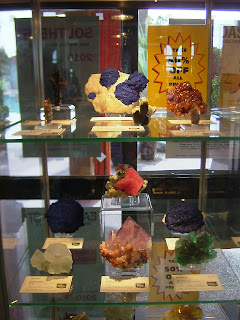Arizona Dept. of Transportation has released this warning about the potential for rockfalls and landslides along I-17:
Wet Weather Spurs Potential Closure on Southbound I-17
Engineers monitoring slopes between Black Canyon City, Sunset Point
February 24, 2010
The Arizona Department of Transportation is monitoring two slopes adjacent to southbound Interstate 17 between Sunset Point and Black Canyon City. Heavy rains over the past month have saturated the slopes and increased the potential of rocks falling onto the roadway.
ADOT crews and equipment are on site and engineers are assessing the slopes to determine the steps needed to maintain a safe roadway – a vital route between Flagstaff and metro Phoenix. Should conditions warrant, ADOT crews are in position to immediately close the southbound lanes.
While no rocks have yet fallen onto the highway, the potential is there. A landslide could require closure of both southbound I-17 lanes and up to seven hours to clear. At this time, northbound I-17 is unaffected.
A closure is possible over the coming days and drivers are urged to call 5-1-1 before traveling on I-17 southbound through this area to avoid unexpected delays or detours. Strategies to repair the slopes – in the short- and long-term – are being developed based on the on-site assessments that are under way.
Wet weather this winter has taken its toll on the highway system around the state. Eroded roadways caused by flooding, rock falls and landslides, snowfall measured in feet, sink holes, and other damage are still being addressed by ADOT crews.
ADOT’s primary concern is public safety. Storm damage is just one of the daily challenges ADOT crews confront to keep drivers safe, and traffic moving. Crashes, criminal damage, wildlife encounters, and ever-changing weather conditions are at the core of ADOT’s public safety responsibility, and often require highway workers to spend nights, holidays and weekends away from family to address critical safety issues.
Drivers are advised to visit ADOT’s Travel Information Site at
www.az511.gov or call 5-1-1 for the most current information about restrictions statewide.





















































